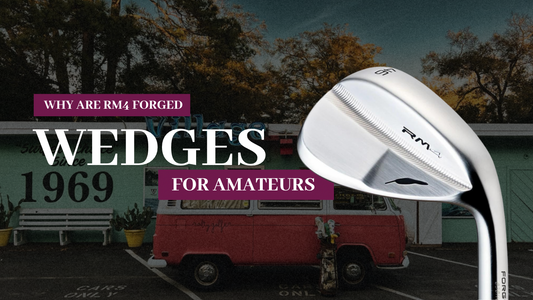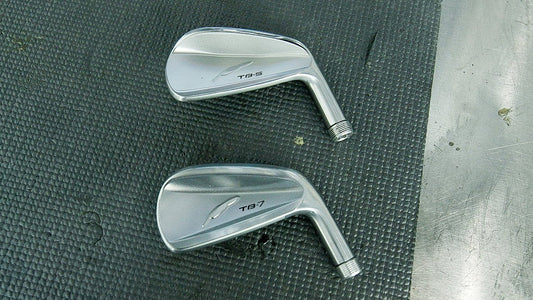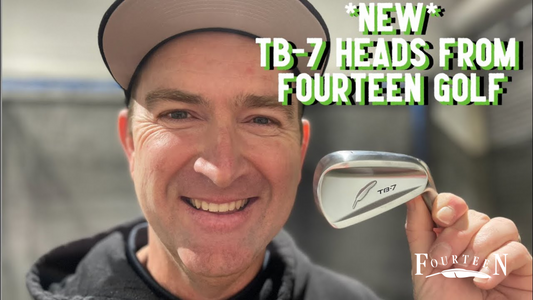As the lineup of aftermarket shafts diversifies, orders for custom clubs at Fourteen are increasing year by year. In the manufacturing department, we are faithful to the custom-made products ordered by dealers, and we are thorough in weight management and assembly accuracy of parts so as not to impair the performance of the head.
At Fourteen, orders for custom clubs for irons and wedges, including the latest model TB-7 FORGED, continue to increase. Of course, we recommend original shafts for all products, but Fourteen is fully prepared to meet the diversifying needs of golfers who use aftermarket shafts.
For example, the NIPPON MODUS3 TOUR 105, which is used as standard in the TB-7 FORGED, is set with standard specifications, so it is easy to meet various requests. It is easy to assume after assembly and it is easy to respond to requests.The difficult thing is models with unknown shaft specs, models with unstable shaft specs, etc. There are many cases where the assumed values after assembly cannot be determined.” (Yokotsuka, in charge of customization).

Since the specifications (characteristics) of the shaft naturally differ from model to model, it is often difficult to create a custom-made product with the desired balance value.

Balance refers to the point of the center of gravity when the club is placed on a scale (balance measuring instrument). The closer (heavier) the center of gravity is to the head side, the larger the alphanumeric characters used as the values. For example, in the case of TB-7 FORGED, D1.5 is the standard value for MODUS3 TOUR 105, but naturally the balance value will be different if the shaft is different. Fourteen derives manufacturer's recommended values for custom shafts, but for custom-made products, values may deviate from the recommended values depending on the customer's request.

Custom-made products always have a note attached with the golfer's request, and in many cases balance adjustment occurs, and severe work is being done.
The balance value is a static value, and we at Fourteen do not want you to stick to that value. However, we must do our best to meet the needs of each golfer. When assembling, we have to ensure that the function of the head is not compromised, because if lead is added to the head to adjust its weight, it could change its performance itself.

At the time of head extraction, the quality control section manages the head weight within the tolerance of 0.1 grams, and the ability to select the optimum head is the core of Fourteen's assembly quality.

As I mentioned in the previous column, Fourteen has inspection work by the industry's most stringent quality control department. What is derived from this is the selection of defective products and the reliable separation of head weights of acceptable products. The head has a weight tolerance, and the small weight is accurately controlled before being delivered to the manufacturing department. In the custom assembly team led by Mr. Yokotsuka, the head weight tolerance is used to match the numerous shaft characteristics each time, and the “precision cooperation” that assembles to the designated (ideal) balance value is established.
Each piece is an important order, and we want to pursue the ideal finished product so that golfers can fully demonstrate their performance. At Fourteen, there is a world where we take things for granted.Because of our superior know-how in design and development, we must not compromise on assembly accuracy that does not impair the performance of our products.

What I learned from Takamitsu Takebayashi “Feeling easy to set up”
Mitsuhiro Yokotsuka in charged of Custom Manufacturing Department Development Section.
My hometown is Ota City, Gunma Prefecture. I started playing golf when I was in college, and I really wanted to find a job related to golf in my hometown. I got a part-time job at a local practice area, and got a job at a mass retailer at the invitation of a senior I met there, where I learned assembly techniques.
After that, by chance, I changed jobs to Fourteen, but the assembly techniques and precision were different from what I had learned up until that point.
This is what Fourteen quality means in all processes, such as the method of gluing and the method of wrapping tape! I was shown the difference as much as I was told.
"What I learned from Mr. Takebayashi is that you must always feel like a player." What is an “easy-to-set club”? There is no doubt that the sensibility of a golfer and a craftsman, who can't be satisfied with numbers alone, is being tested for the "ease of stance" that can be changed just by inserting the shaft. It's been 15 years since I joined Fourteen, and I'm still spending my days accumulating experience with each and every one of the custom clubs that don't have the same format.





